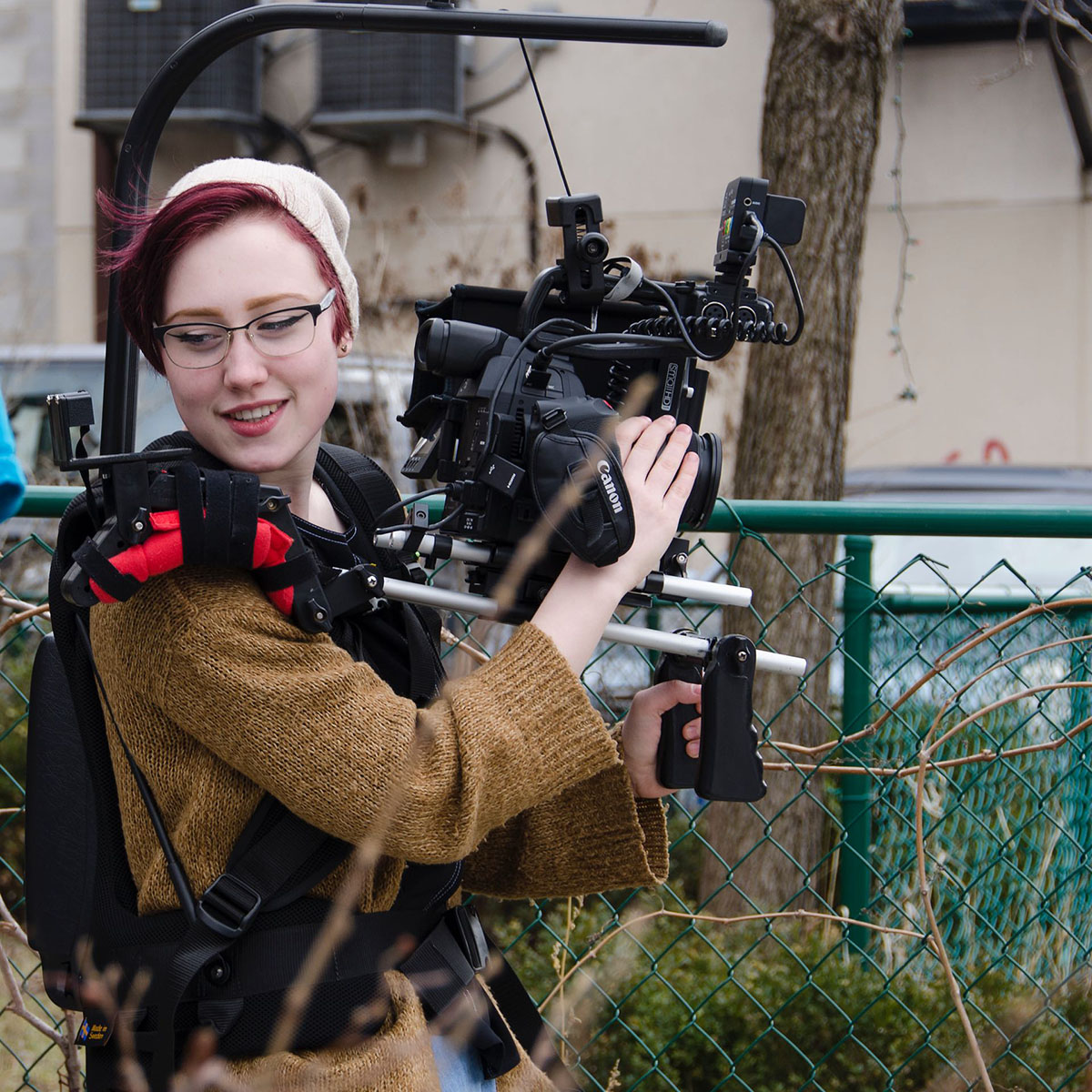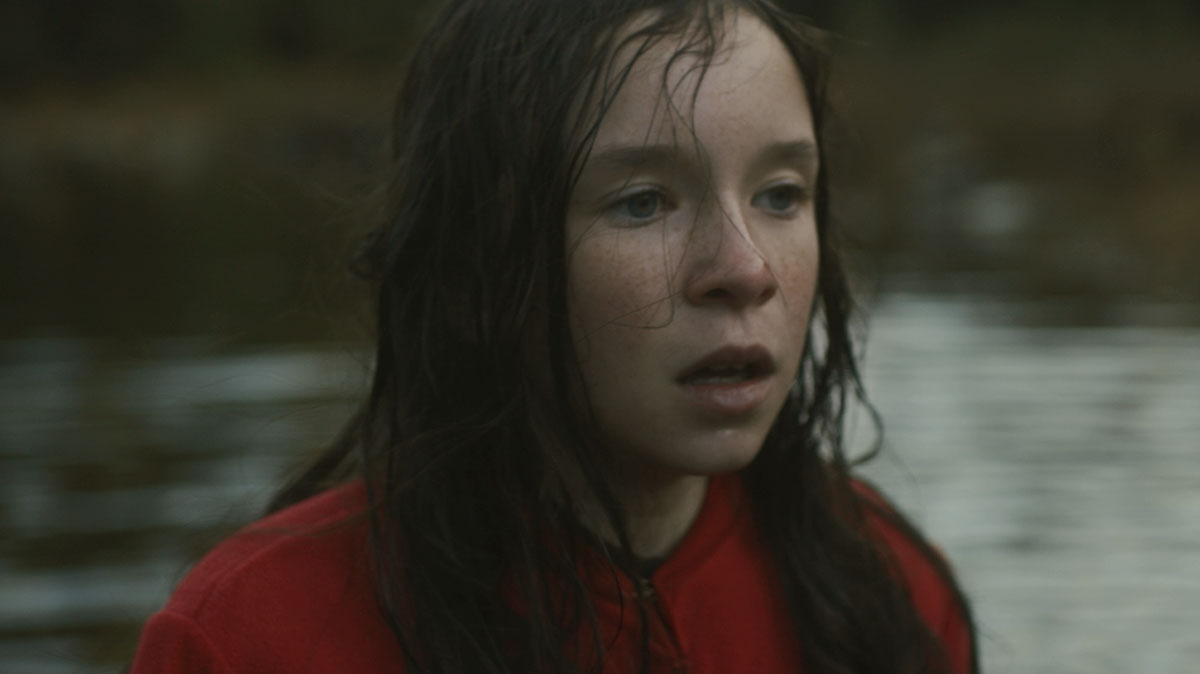Making The Leap
An interview with emerging filmmaker Morgana McKenzie
At only 17 years old, Morgana McKenzie is already making a name for herself in the film industry. Prolific, yet astute in her approach and style, her short films have screened at over 100 festivals worldwide, winning more than 30 awards.
Over the past few years, Morgana has been a staple at the TIFF Next Wave Jump Cuts Young Filmmakers Showcase, an annual presentation of short films by students in grades 9 to 12. Beginning in 2014 with GIFTS, her work has been selected every year, including We All Go the Same and Kurayami no Wa in 2015, Ellie in 2016 (winner of the Gertrude Lowengren Award for Best Fiction film), and Atlas World in 2017 (winner of Best Director and the Canada 150 Award for Best Film), the first year the competition opened submissions nationwide.
Because of donors like you, TIFF is able to produce vital programmes such as Jump Cuts, enabling young filmmakers like Morgana to network with fellow artists, meet industry professionals, and showcase their work on an immense scale. We spoke with Morgana about her filmmaking and how your support literally jump-started her career.

Hello, Morgana! I’m curious about your relationship with film. Can you describe how your journey with filmmaking began?
I’m a very visual person. As a kid I took a huge interest in visual arts, and was fortunate to have parents who nurtured that. In turn it gave me the confidence to try new things and experiment.
One summer I took that to a new level. I was 12 and hard at work on prepping to shoot my first short film. I had just watched Super 8 by J.J. Abrams, and if you haven’t seen the film, the subplot was a group of kids trying to make a movie. They’d head out together day or night, with a camera and fake blood, and were motivated to create an awesome short film. Watching kids my age do that on screen was so new to me, but it made me feel like I could do it too.
So I gave it a shot. Similar to the characters in Super 8, my friends and I spent five hours one summer afternoon filming an apocalypse movie — toilet paper, zombie makeup, and all. It was not good, but as much as I like to cringe and laugh at the dialogue and continuity issues now, it was my first attempt at doing a short film, and it started my love of filmmaking.
When did you first hear about Jump Cuts, and how did you get involved?
I stumbled upon Jump Cuts when I was researching different film festivals with my parents. We had just been introduced to the film festival world and were trying to find film festivals that we could get to without too much expense in terms of travel. The first time I ever submitted to Jump Cuts I was 13, and submitted a “day in the life” video of my classroom to the TIFF Kids International Film Festival’s Jump Cuts Young Filmmakers Showcase.

What has your experience participating in Jump Cuts been like?
Jump Cuts has helped introduce me to working professionals in film and likeminded youth filmmakers. Growing up in Ottawa, there wasn’t much in terms of film, especially when it came to youth. Going to Jump Cuts meant I could meet and socialize with kids like myself, and that wasn’t something I had been able to do before. Looking back, it’s weird to think how many of my good friends now, four years later, I met through Jump Cuts.
Carol Nguyen is an experimental/documentary filmmaker who has won at TIFF Jump Cuts a number of times, as well as many other international festivals. I was familiar with Carol’s work as we often screened at the same festivals and ran in the same circles, but I had never met her in person. One year at Jump Cuts we were both selected filmmakers, and before the screening I saw Carol huddled in a corner of TIFF Bell Lightbox, editing her latest short on her laptop. From there we started chatting, and we’ve been collaborating ever since. In 2016 Carol approached me about being the cinematographer for her short Façade, and we worked together for two to three months on the project. It’s a relationship that wouldn’t have happened without Jump Cuts.
WWhat is your approach as a filmmaker? Do you have a personal style?
I don’t consider myself a writer. I have writer friends who live and breathe writing, but I am not that. The way I do write is through visuals. I take visuals and ideas I think are interesting and string them together with other visuals to try and create a story. It’s a weird and lengthy process of playing with the imagery until a story starts to emerge, but I’ve come out of this process with films that I feel are visually rich. This is probably where my interest in cinematography stemmed from, and is probably why my films have so little dialogue, given it’s almost all visual storytelling.
Where do you see your career in filmmaking headed?
I’m moving to Toronto permanently in September, and will be working freelance as both a colourist and cinematographer. It gives me the flexibility to schedule work on my own time, so I can continue to work on my own projects. Although I will continue to make shorts, I plan to branch out to longer-form work (series, feature, etc.), but above all else I’ll be continuing my work and development as a cinematographer.
Is there anything you’d like to say to other young artists getting their start in filmmaking?
Be ruthless, and learn from your mistakes. Constantly collaborate with others to see how they work. I hear too often that making short films is pointless, that you should only make features — all of these “rules” for how to be good at your craft. I think that’s ridiculous. If you want to tell stories, if you want to make powerful visuals, do it. Do what’s best for you to become as good as you can be.